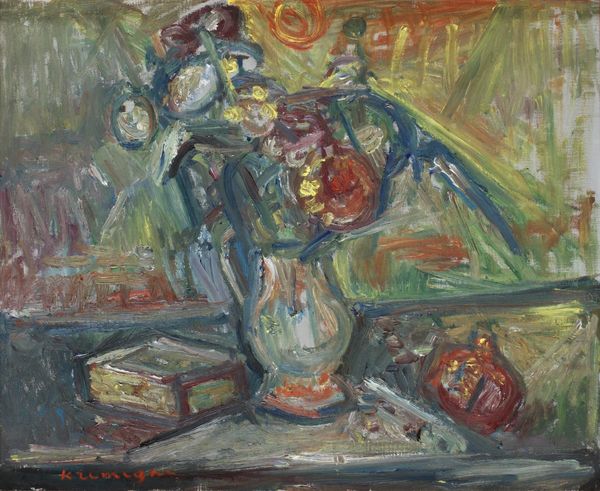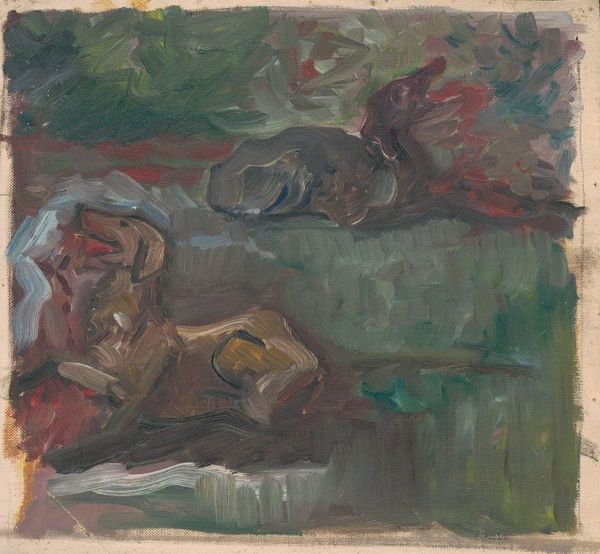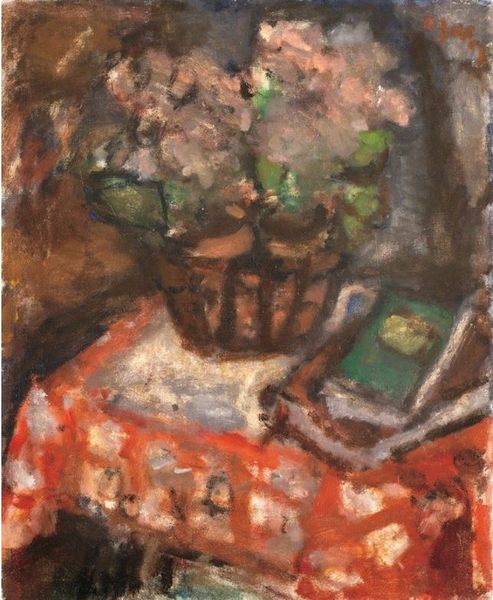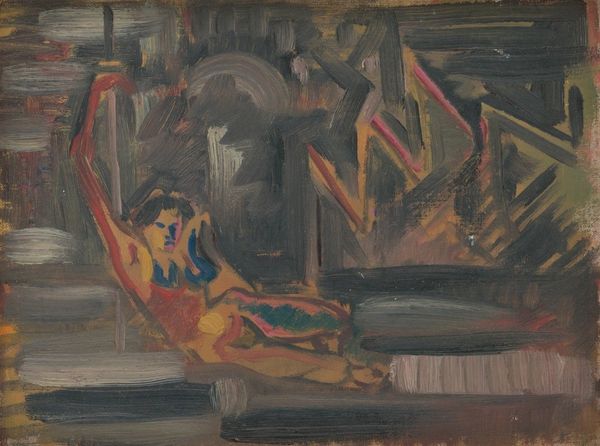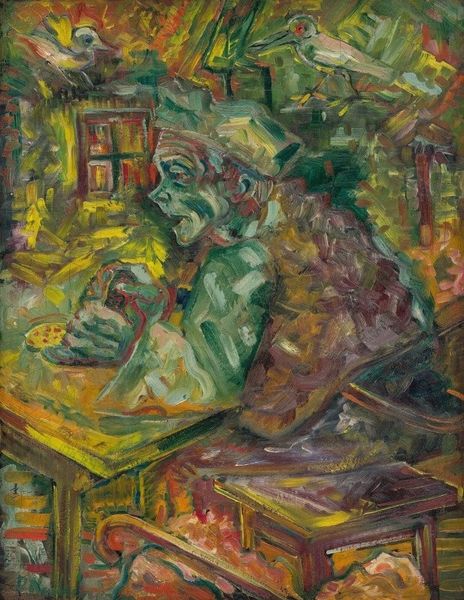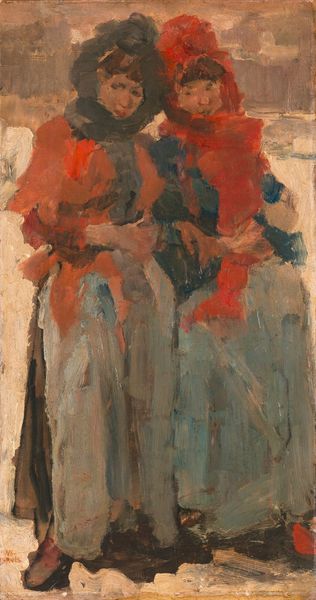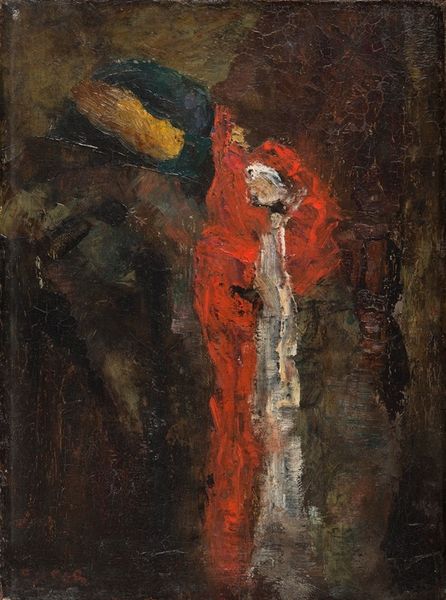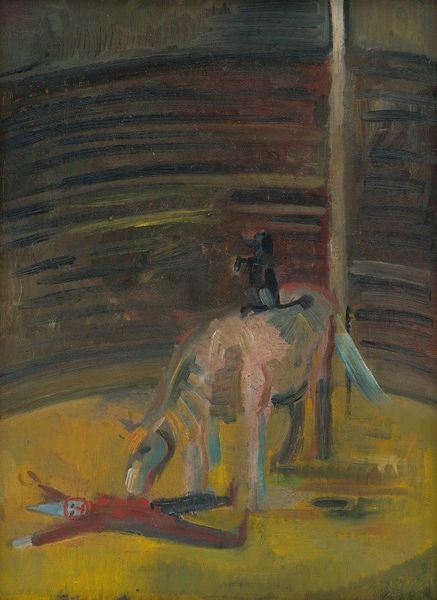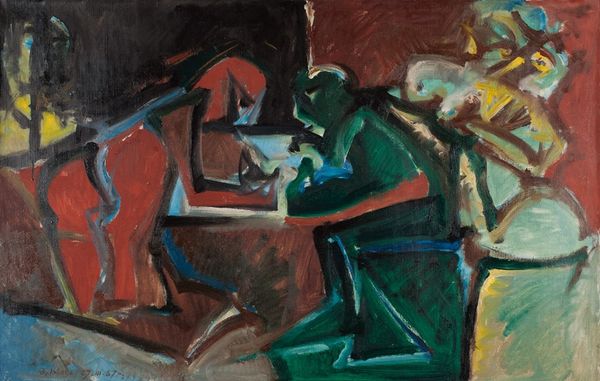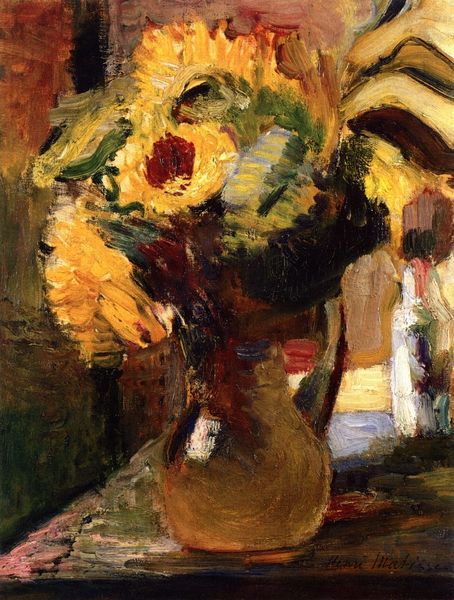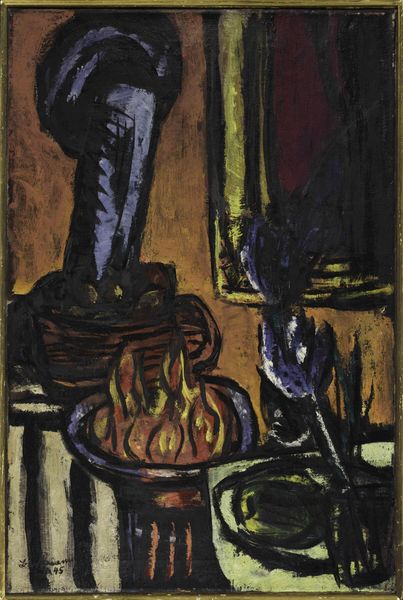
Dimensions: overall: 57.9 x 67.8 cm (22 13/16 x 26 11/16 in.) framed: 67 x 77.2 x 6.7 cm (26 3/8 x 30 3/8 x 2 5/8 in.)
Copyright: National Gallery of Art: CC0 1.0
Curator: Here we have Mark Rothko’s “Untitled (woman arranging flowers),” from around 1935. Rothko, primarily known for his later abstract expressionist works, created this genre scene using oil paint on canvas. Editor: The first thing that strikes me is the intensity of the red backdrop. It clashes, almost violently, with the muted tones of the woman and the table setting. There's a tension here, a sense of unease despite the mundane activity depicted. Curator: It's crucial to note that this work precedes Rothko's signature style. Look at the thick impasto, the visible brushstrokes—the very materiality of the oil paint and the artist's labor are evident. These details were physical manifestations of a broader engagement with the social and economic conditions of his time, as was genre painting. Editor: I'm more interested in what this scene might represent, how Rothko evokes specific cultural values. The act of arranging flowers has been traditionally linked to domesticity and the feminine role, doesn’t it? Is he conforming to these images, or offering a subtle critique? That vase—it feels heavy with implication. Curator: You’re right. He is acknowledging and deconstructing the aesthetic hierarchy. The composition, using seemingly simple elements of domestic labor like flower arrangement, can become tools for exploring the very construction of meaning, highlighting, or perhaps interrogating traditional high art themes by incorporating domesticity. Editor: Precisely! Look how he contrasts the vibrant blooms with the stillness of the vases—it speaks to the fleeting beauty of life against the endurance of the material world, right? Or is this something else entirely, an exploration of female agency through creation? Rothko offers no easy answers through visual storytelling. Curator: Well, I wonder about this canvas, and why it might matter in the studio in that era, with specific types of production processes or labor conditions—it offers new opportunities to examine social, material and symbolic aspects of the work that could enhance our understanding about it and art creation! Editor: This really offers a glimpse into Rothko’s evolution—reveals the roots of symbolism that would later define his color field paintings. It’s exciting to trace those subtle threads through the imagery. Curator: Absolutely. Seeing the artist grapple with the interplay of labor, canvas, and paint, provides vital information to consider regarding production practices, as related to meaning, then and today.
Comments
No comments
Be the first to comment and join the conversation on the ultimate creative platform.
